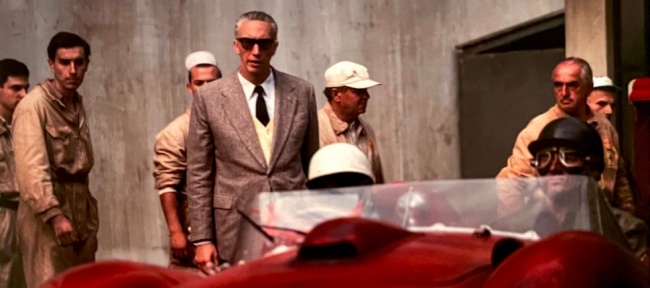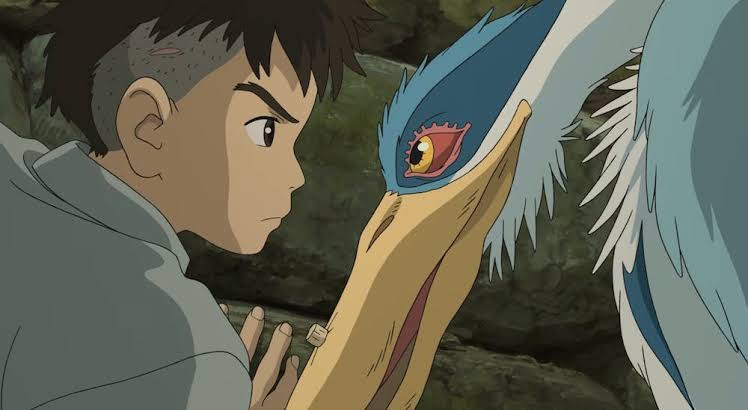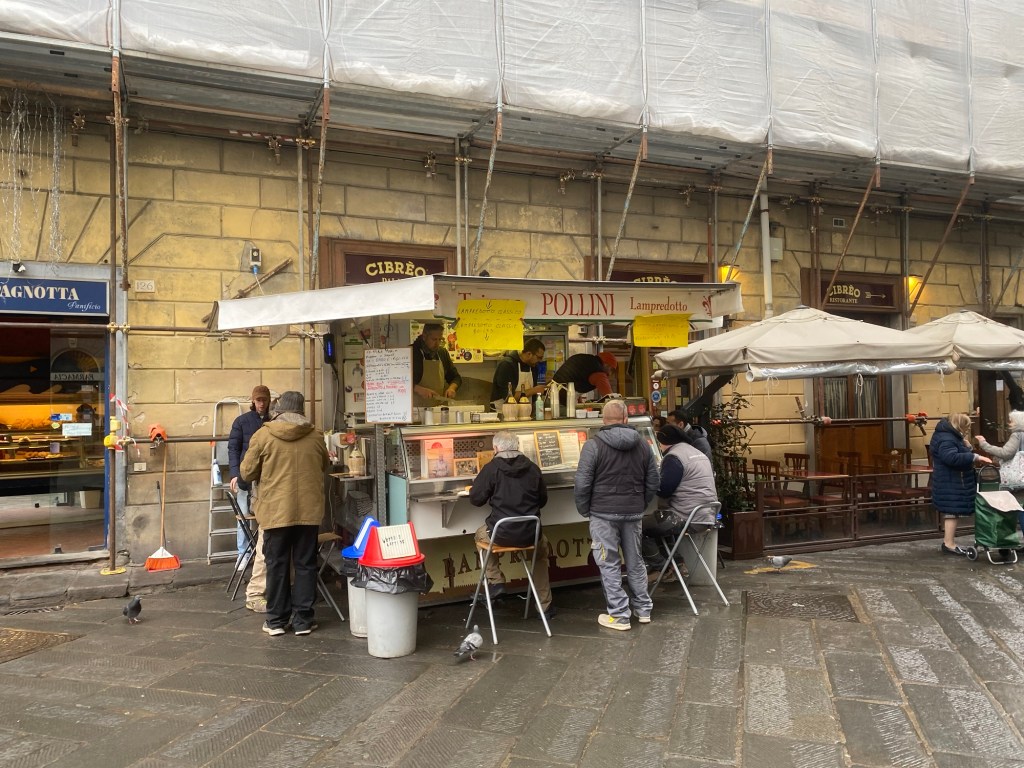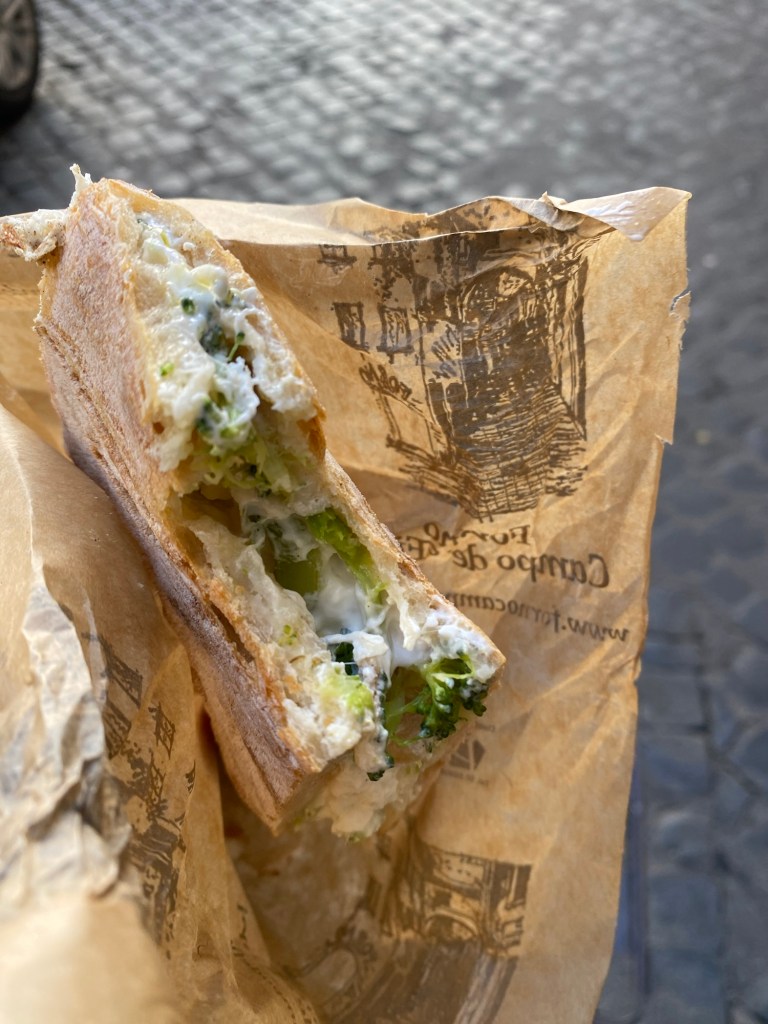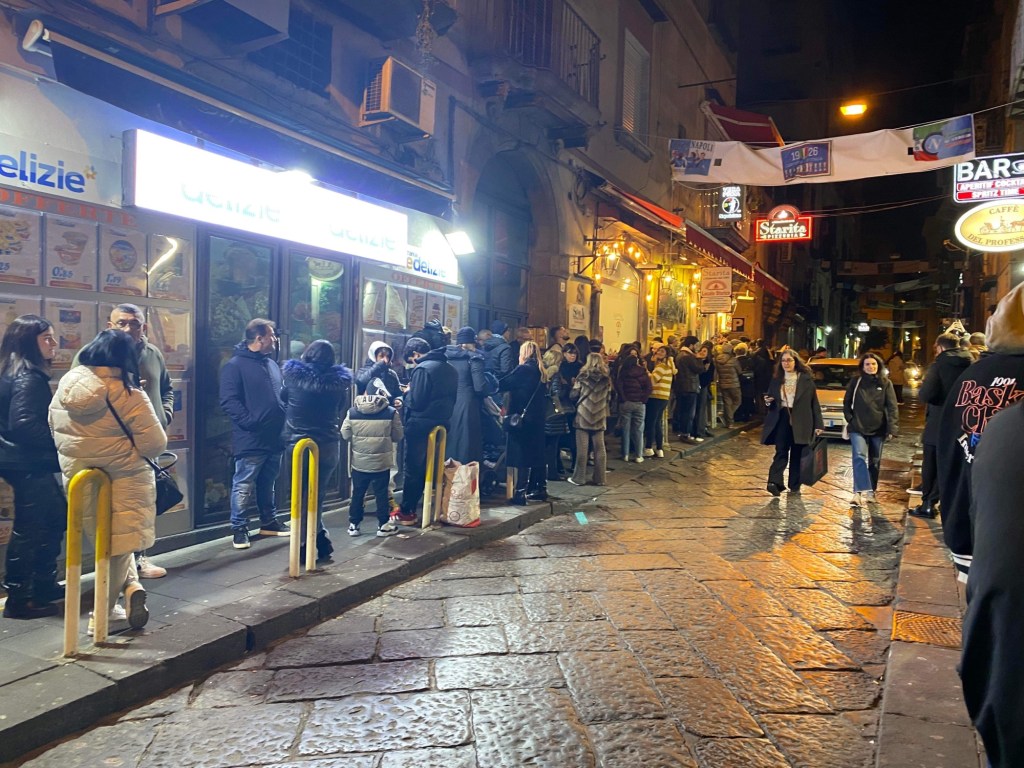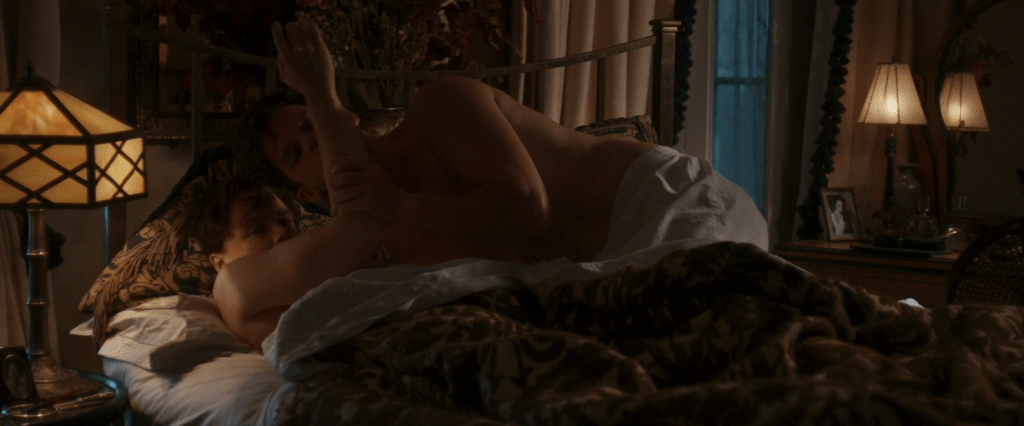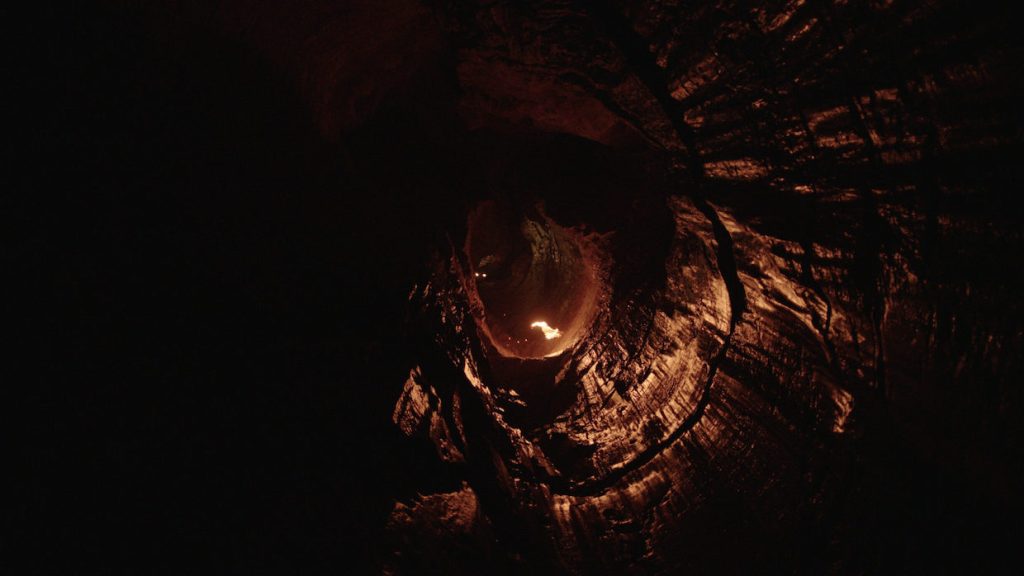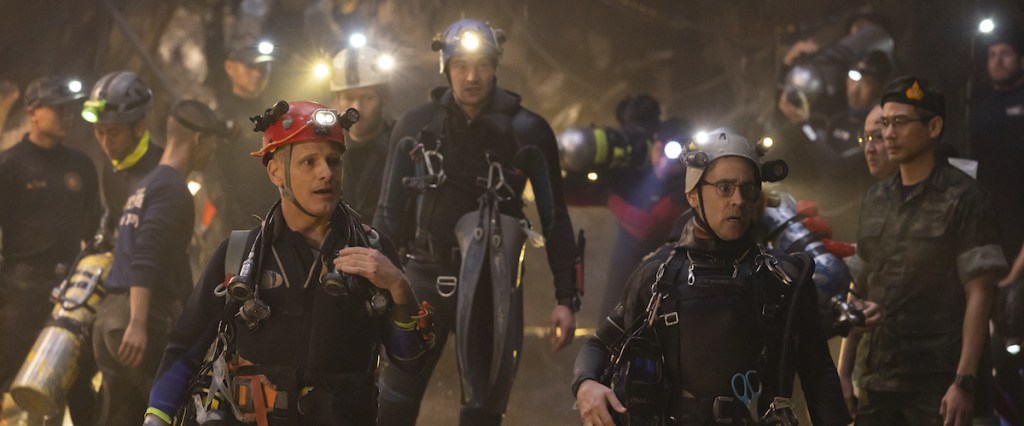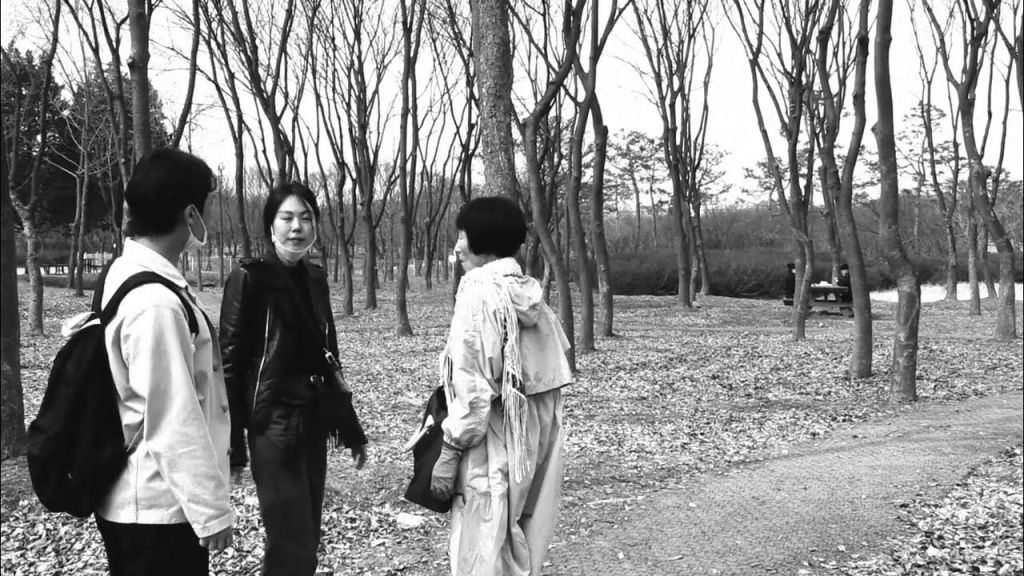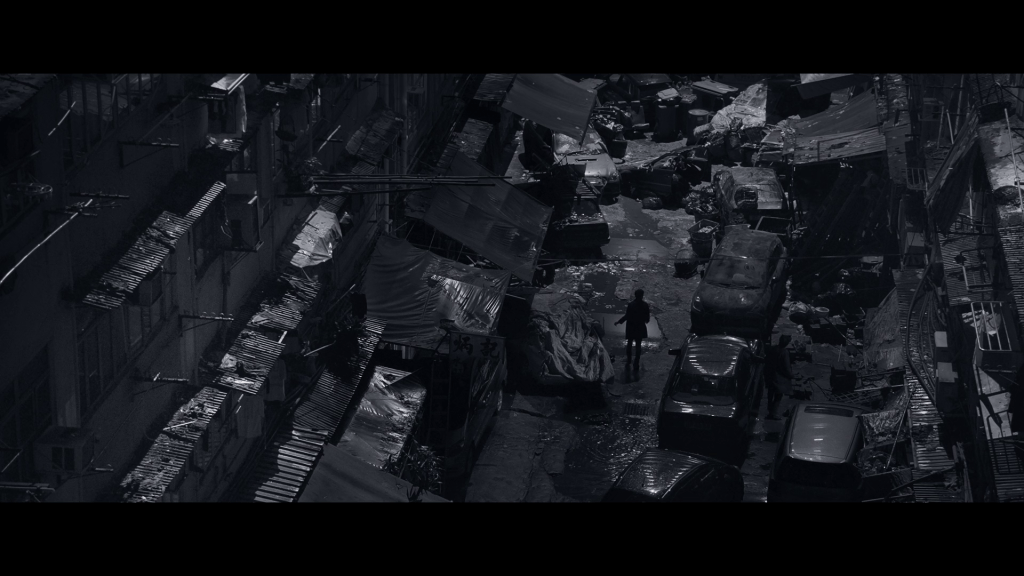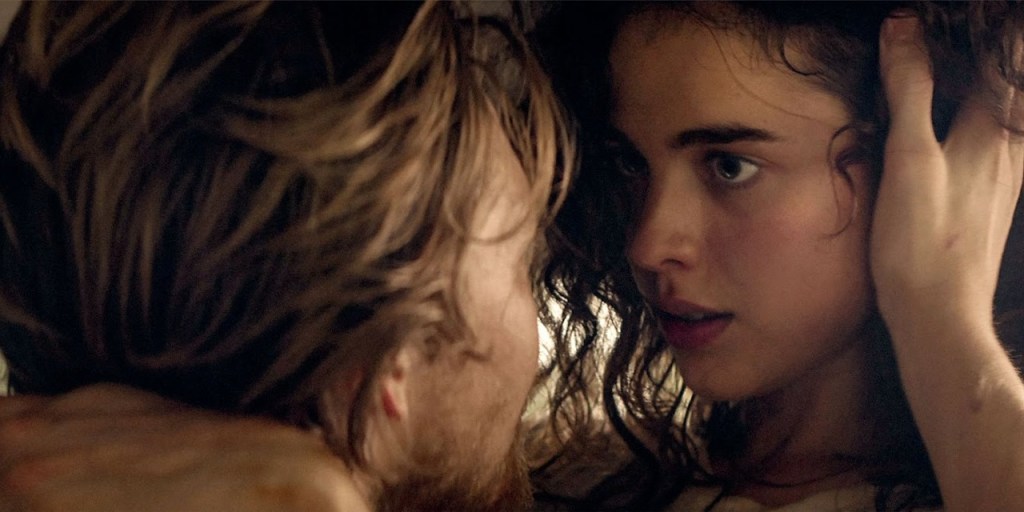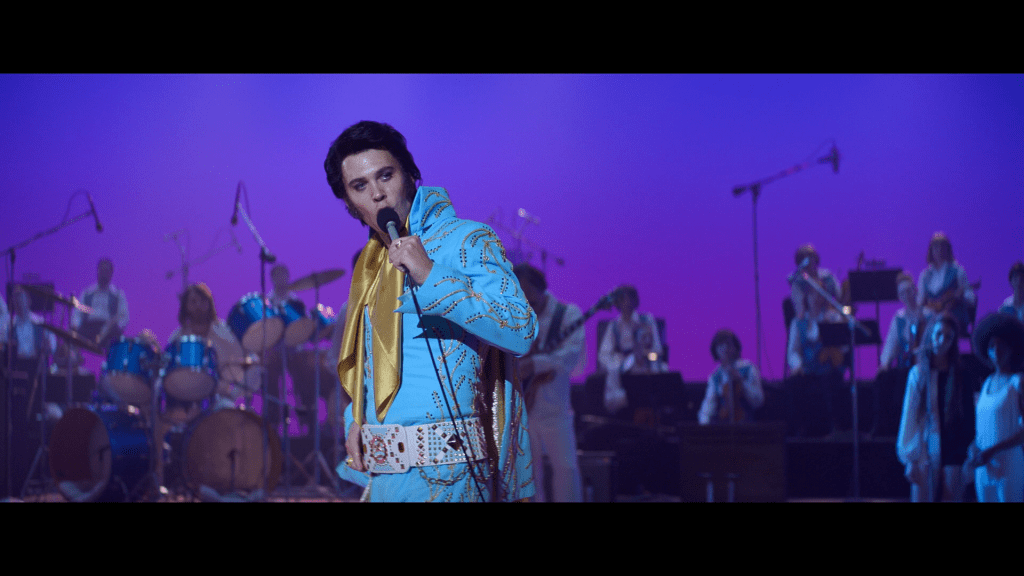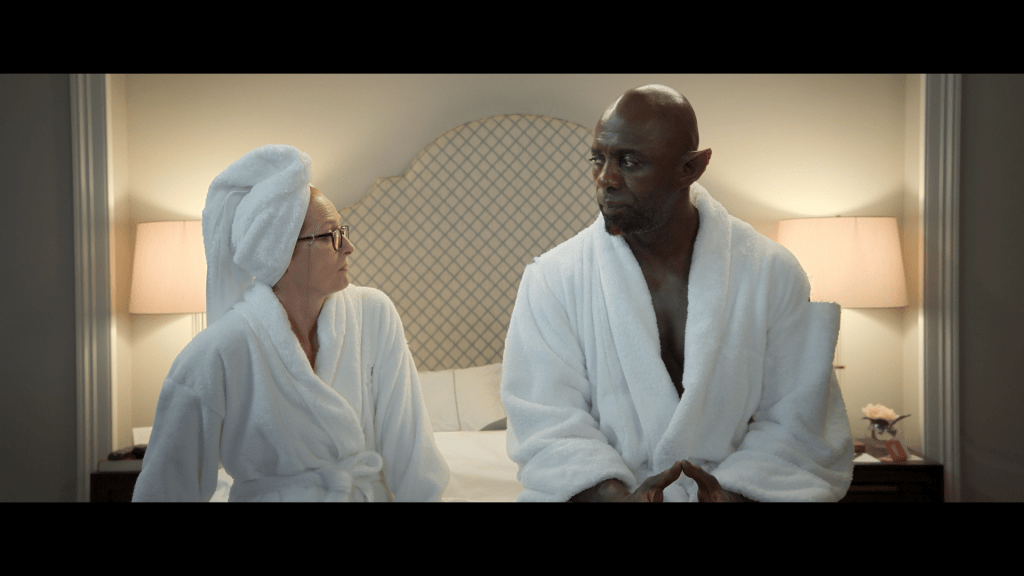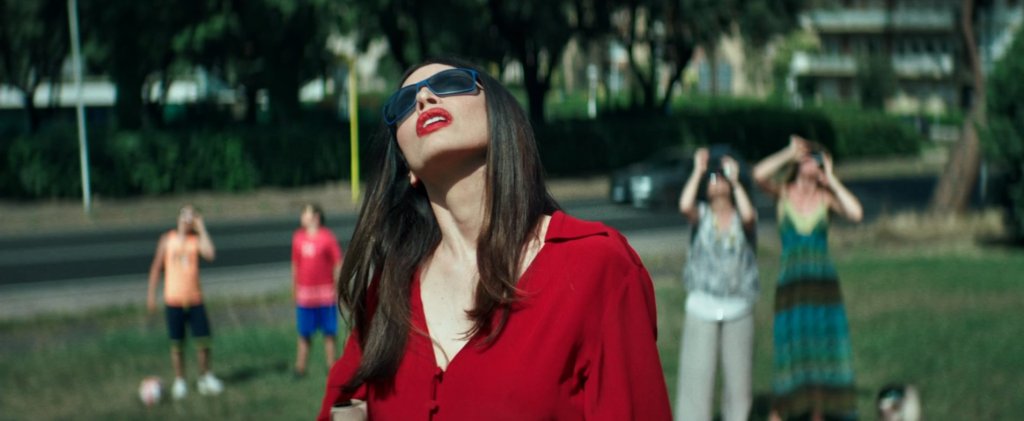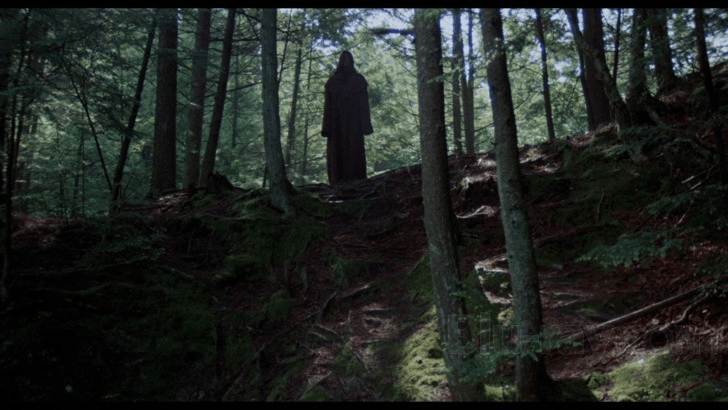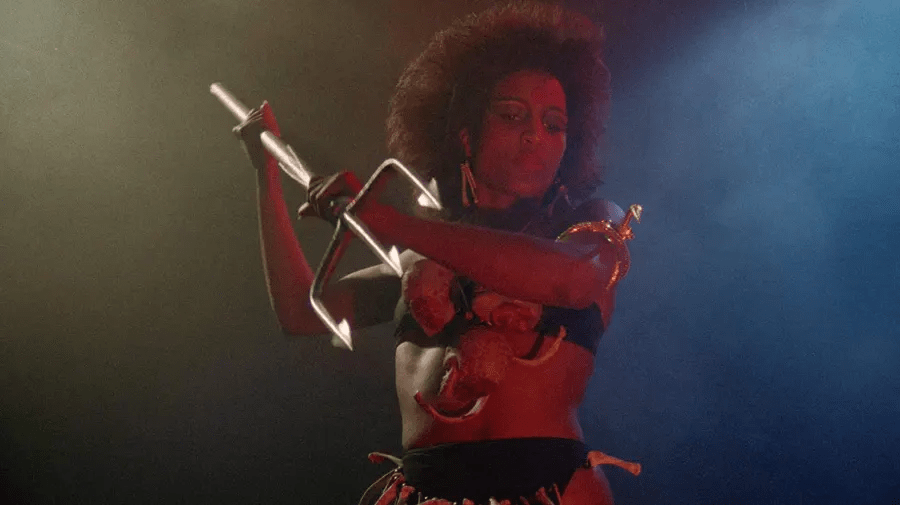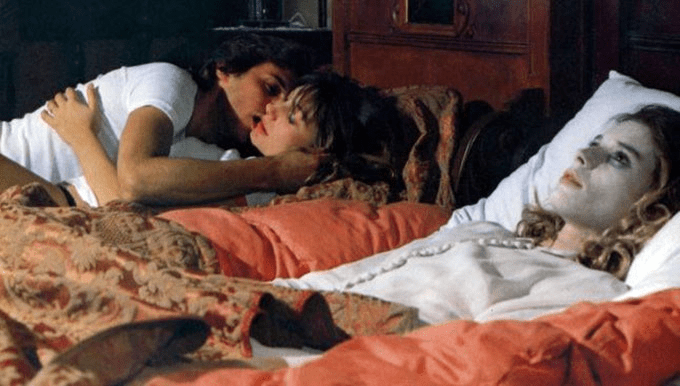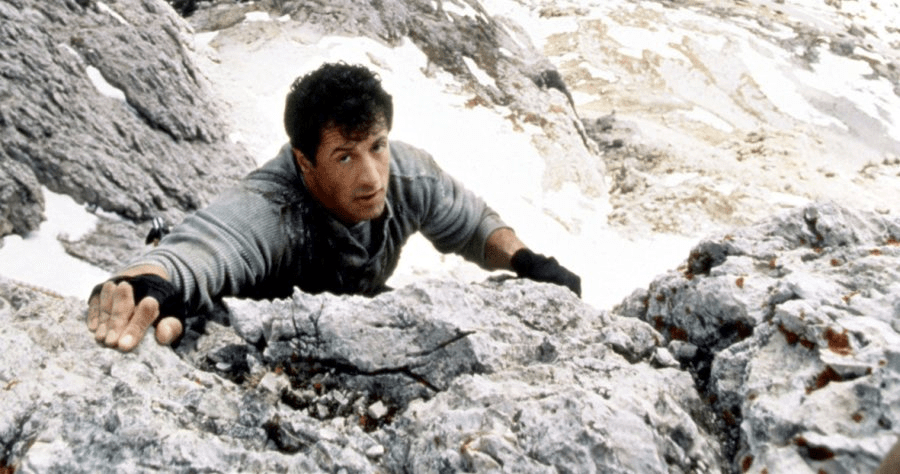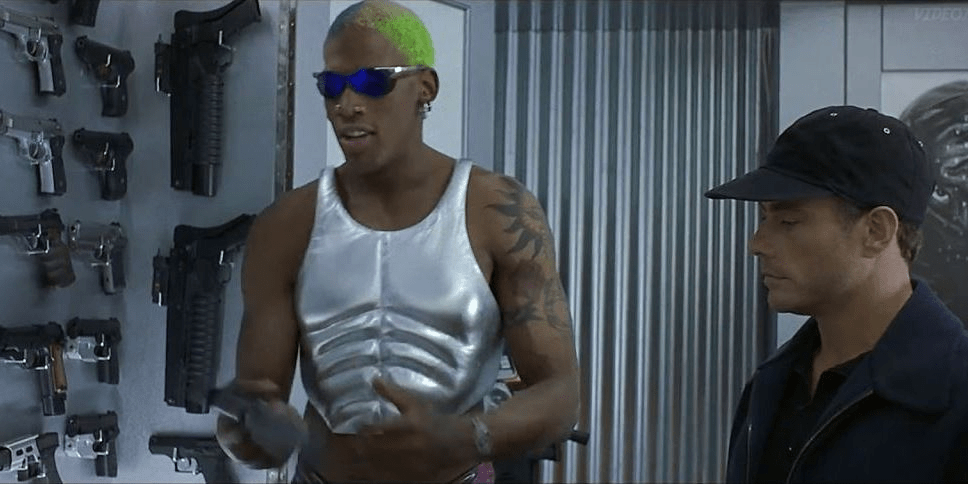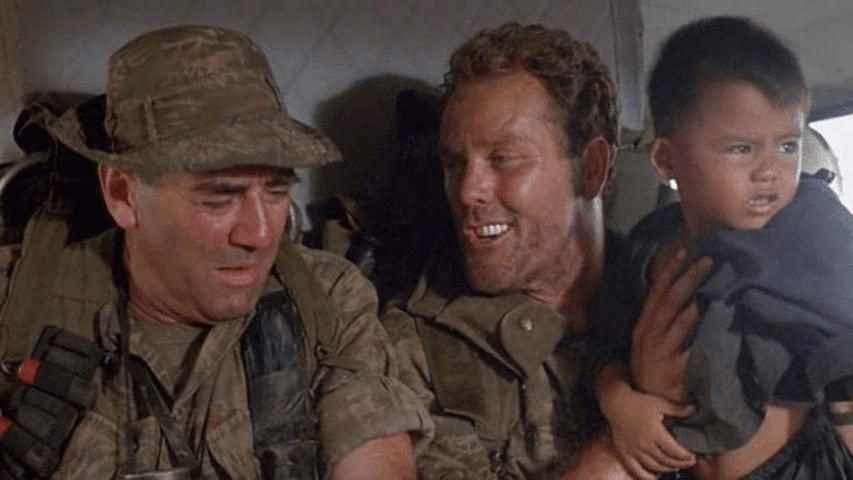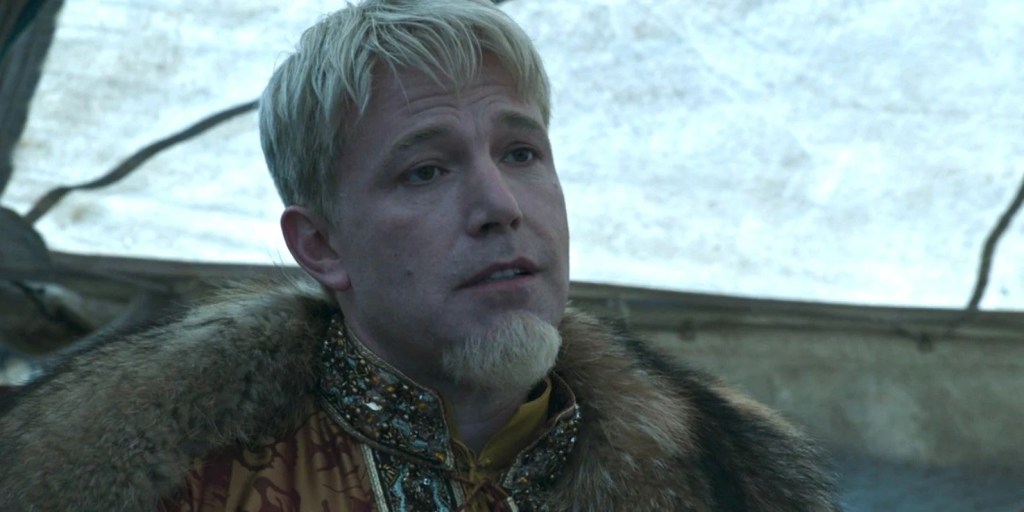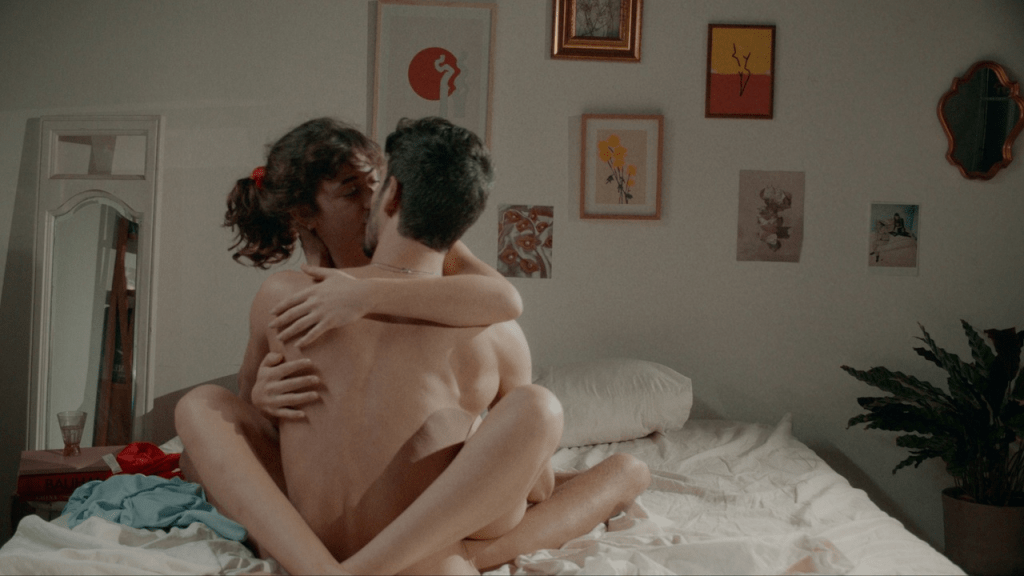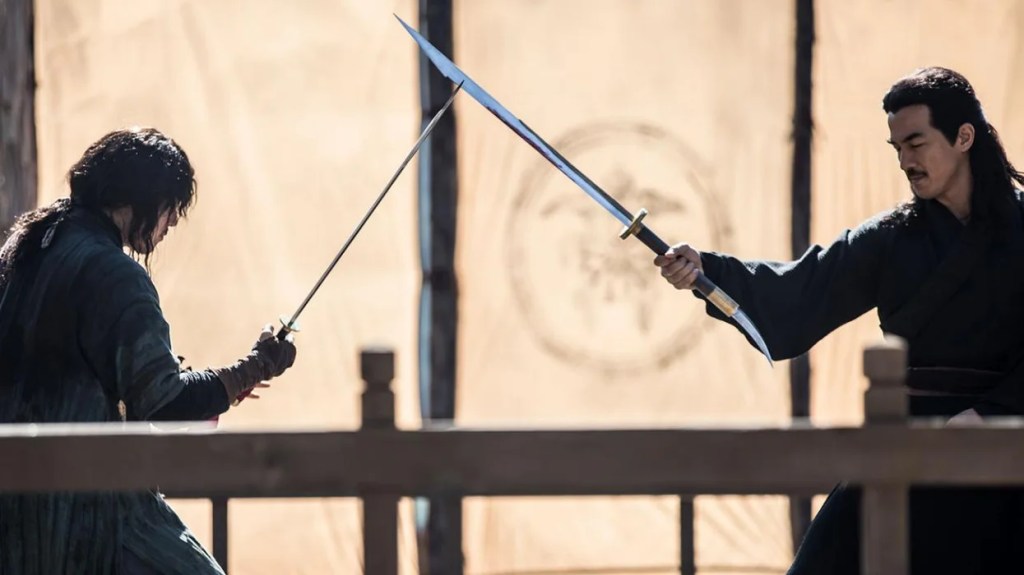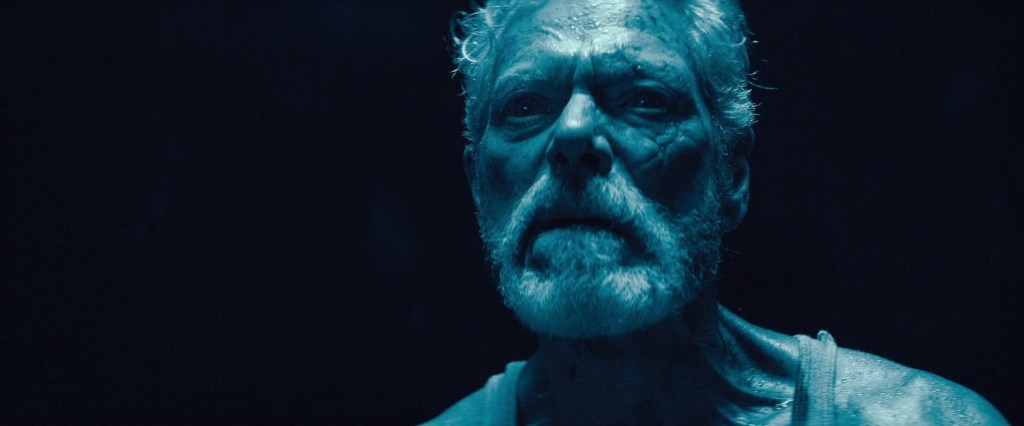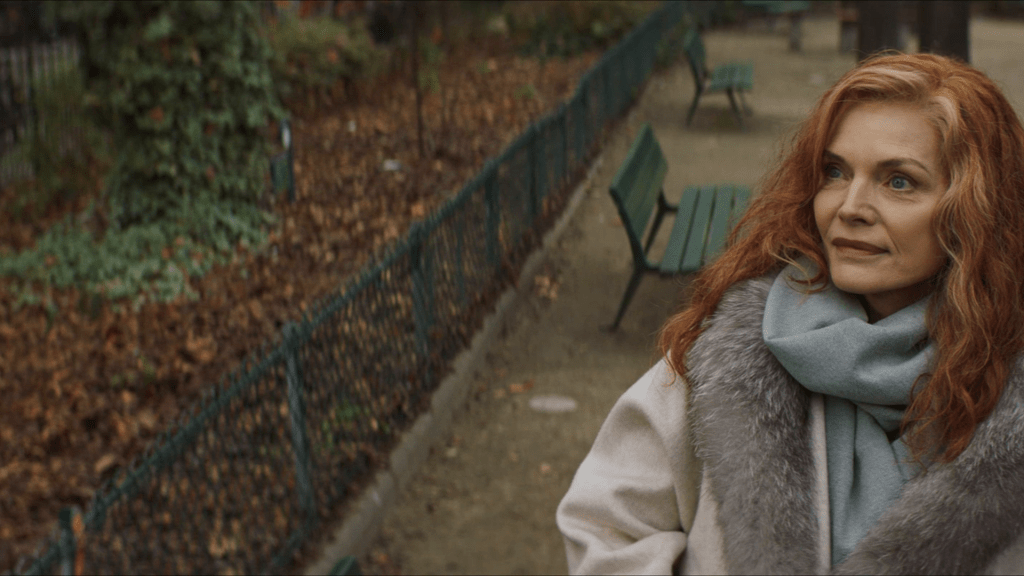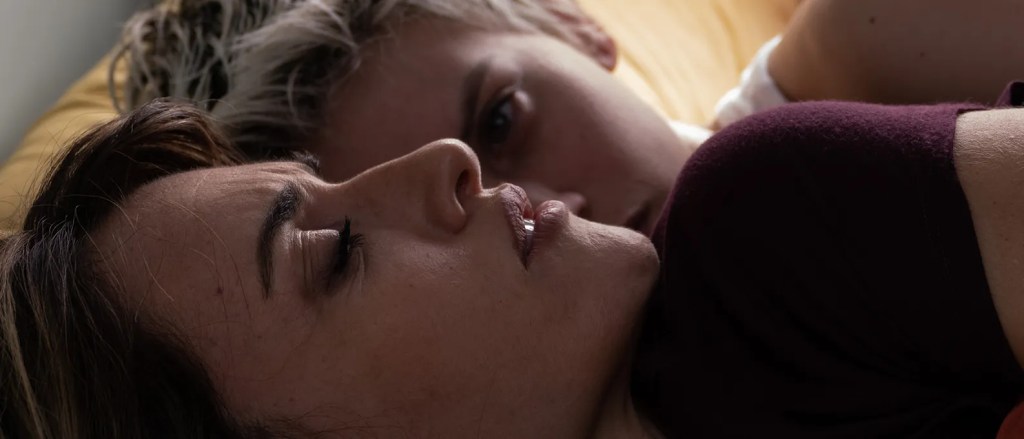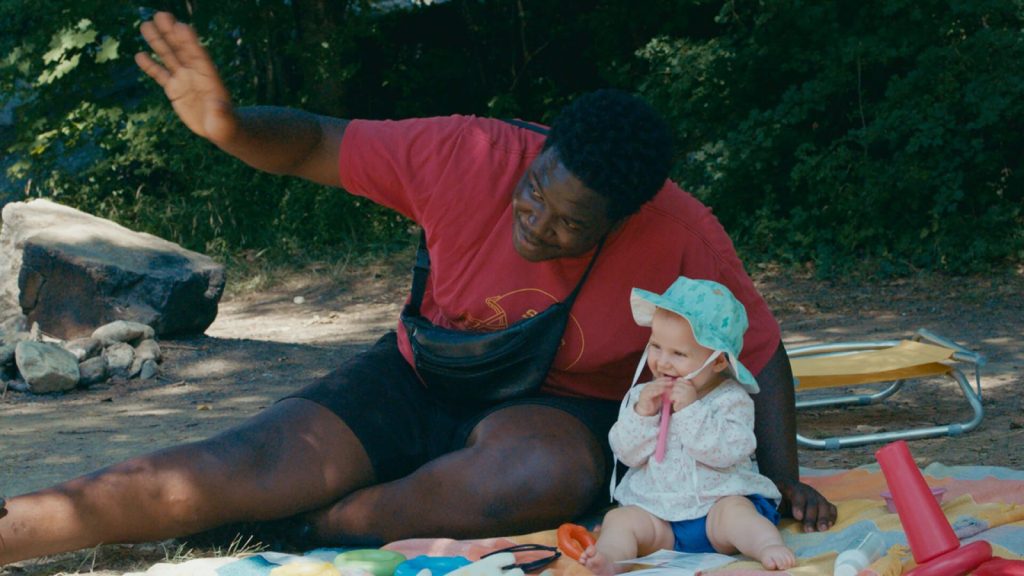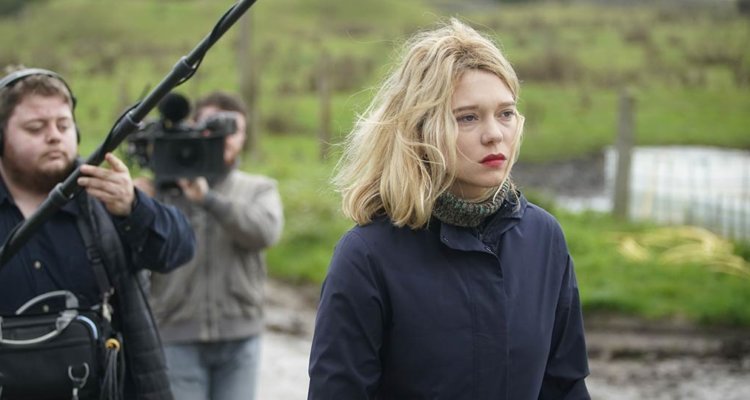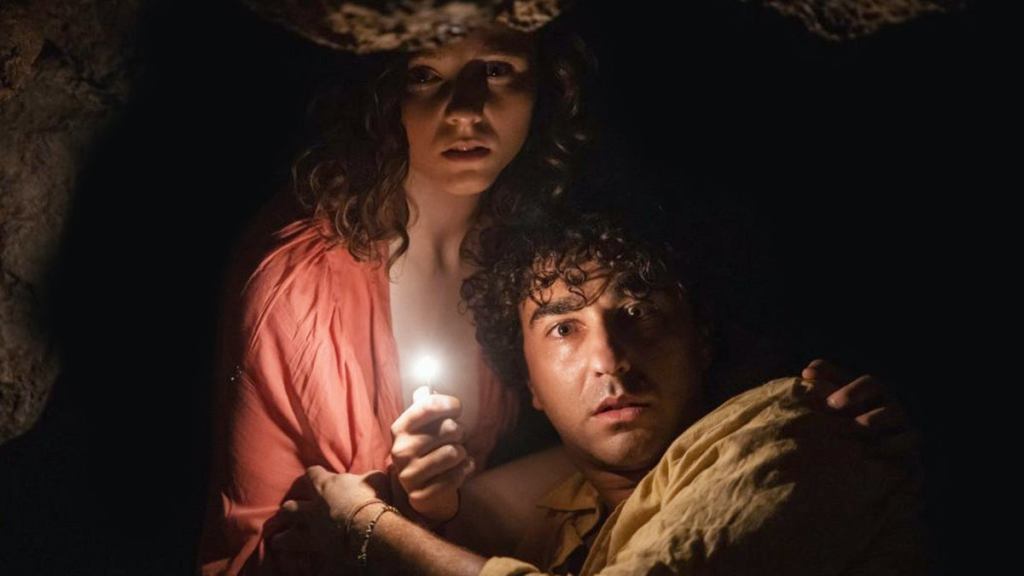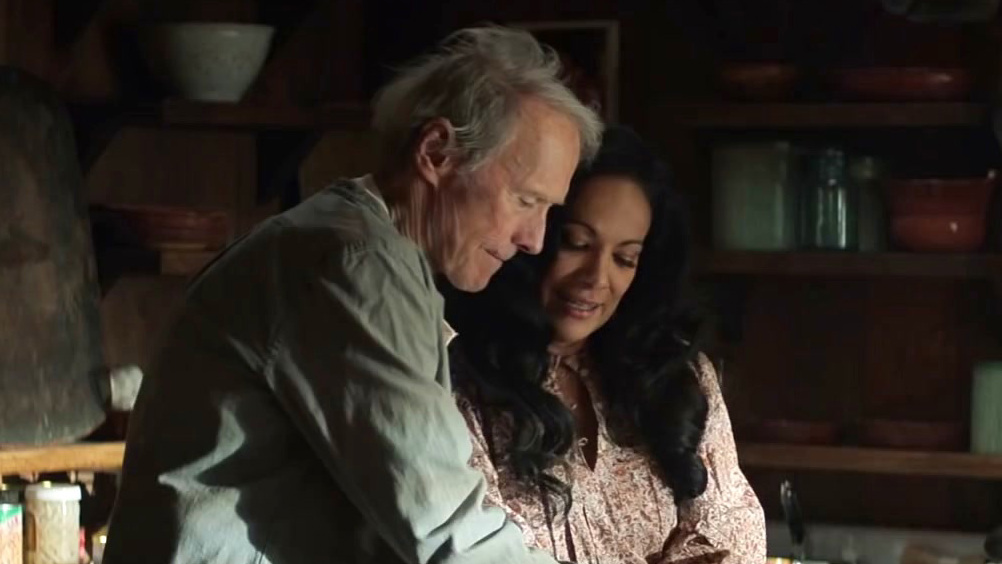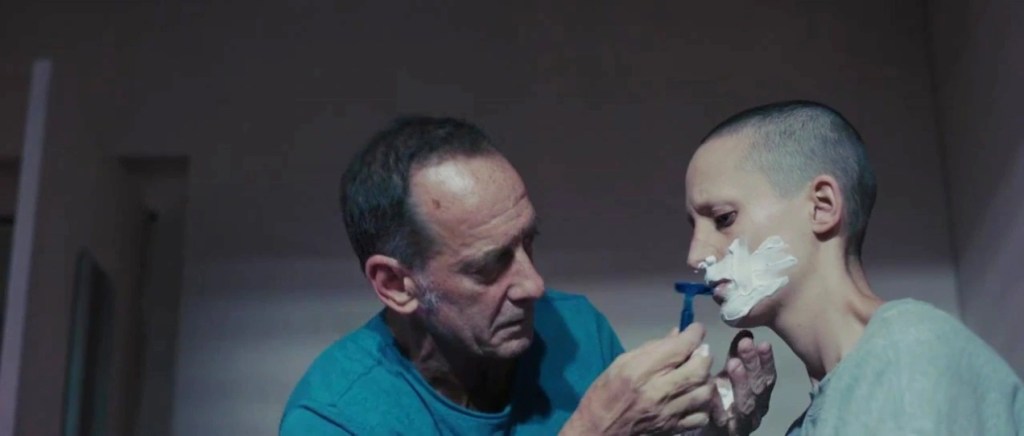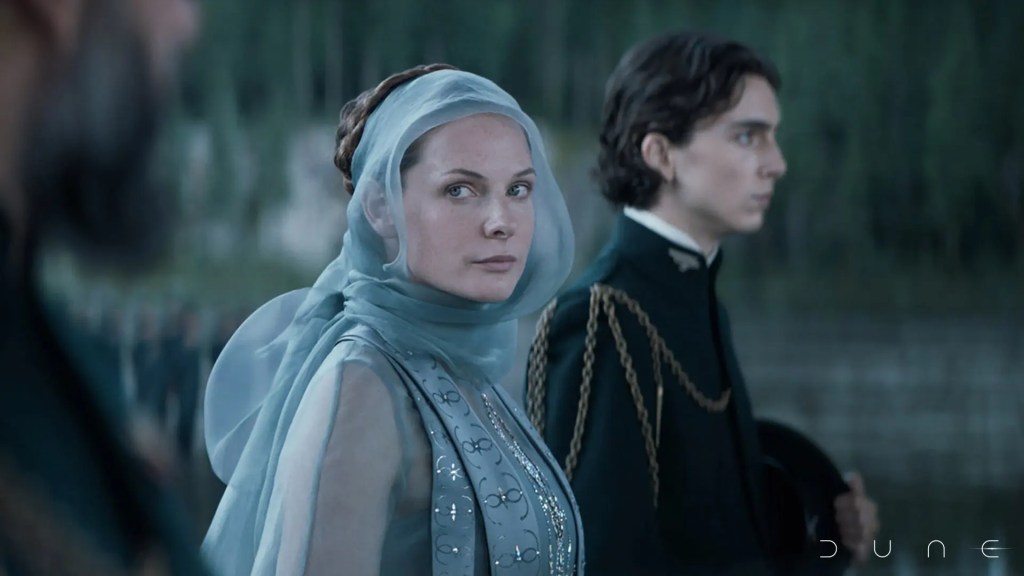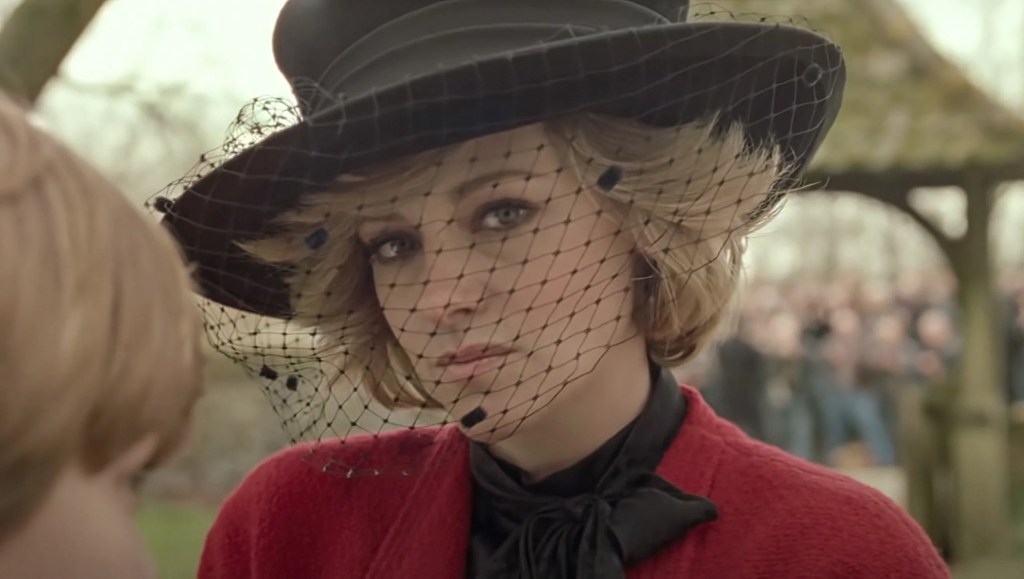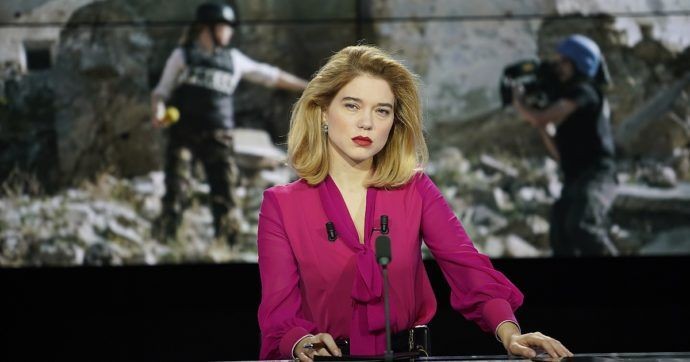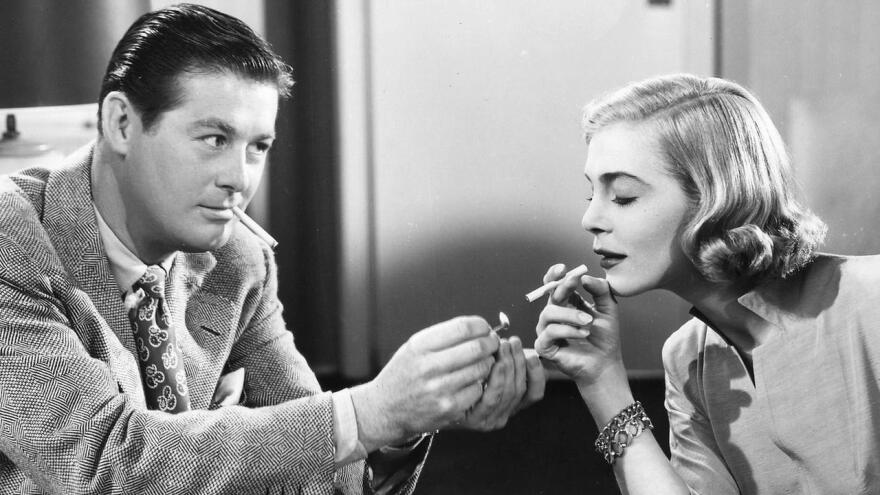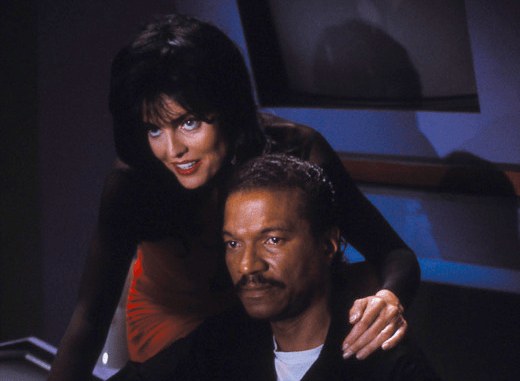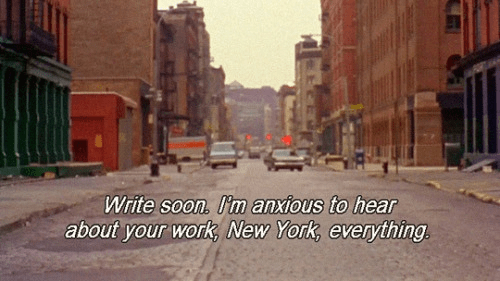As is our tradition, we have waited till Oscar Sunday to put together the Strohl family year-in-review. One new development this year is that after six years of marriage, Angela decided to change her last name to Strohl, and so we are now all officially Strohls. Each of us decided independently how long to make our lists. I went with 25 in order to give myself space to include some movies that I haven’t seen on many other peoples’ lists. Josh also went with 25, while Angela and Isabel both limited themselves to ten plus a few honorable mentions. I tried to tempt Angela to make her list longer, but she insisted: “Only these thirteen movies spark joy.” She is a much tougher grader than I am. And, alas, I am the only one who had time to write capsules.
Overall, I think it was a very good year and I had trouble limiting myself to 25 selections. Among the Oscar movies, I liked The Brutalist even though (indeed, partly because) it is a something of a mess, and I enjoyed A Complete Unknown (it helps that it breaks from many biopic conventions), but otherwise the best picture nominations are a miss for me (though I haven’t seen the Walter Salles film yet). From the other categories, I liked Flow and Soundtrack to a Coup d’Etat. The only acting nomination I have strong feelings about is Guy Pearce for The Brutalist (hell yes), but I also want to acknowledge that Chalamet did a very good job with an impossible assignment.
Without further ado, my list:
25) Hundreds of Beavers (Mike Cheslik)

Early social media posts showing crowds dressed up as lumberjacks to go see this made me extremely cynical about it, and I was expecting a manufactured cult movie full of self-awareness and irony. Wrong! It quickly won me over. Its level of commitment is way too high to confuse it for hipster irony. It is two hours of live-action Looney Tunes, packed with imagination and low budget ingenuity.
24) Local Legends: Bloodbath! (Matt Farley)

If you are new to Motern cinema, this is not the place to start. Start with Don’t Let the Riverbeast Get You and also watch the first Local Legends before watching this. The first Local Legends movie is a sort of artist’s statement from the Motern collective, which is a group of friends in Massachusetts who have made a series of wonderful micro-budget movies over the last couple decades. You may have seen profiles of Matt Farley, who has written over 25,000 songs partly as a way to game Spotify’s payout system. In this sequel, Farley’s career and hard-won cult of fandom drive him mad (it is actually not Farley’s only recent film where he becomes a murderous maniac). It’s both very funny and a smart commentary on the outlook for independent artists in the contemporary era.
23) All You Need is Death (Paul Duane)

The tepid Oddity got more attention, but this is the recent Irish folk horror movie that I would recommend seeking out. Duane has essentially made the folk music counterpart of John Carpenter’s Cigarette Burns. Musicologists seeking a forbidden song of power fuck around and find out. This stands above the vast majority of contemporary horror in virtue of its atmosphere of pervasive evil and its willingness to let bold images speak for themselves without the kind of clumsy thematic exposition that has become de rigueur.
22) Eureka (Lisandro Alonso)
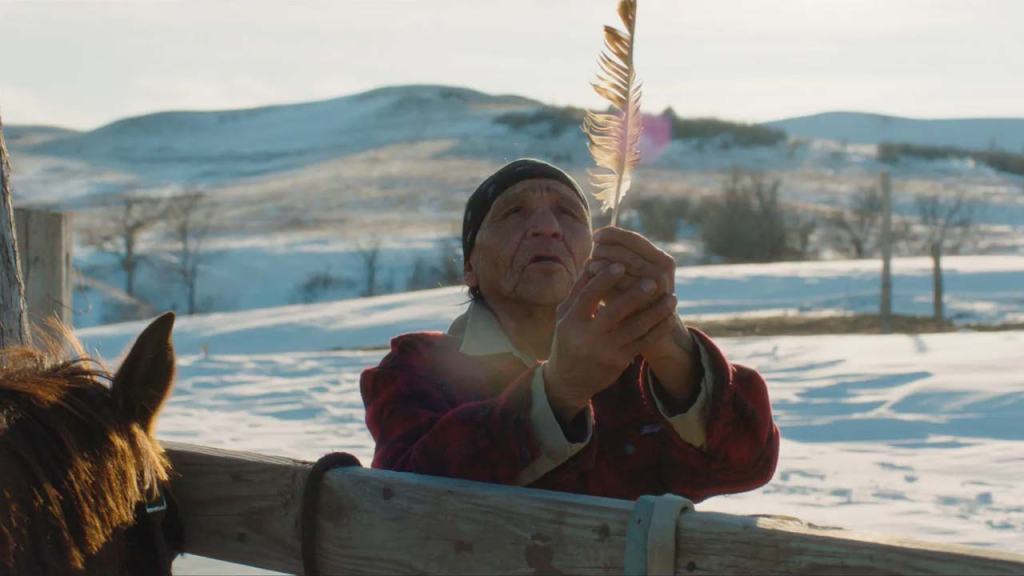
Three landscapes tethered by magic and cinema. I’m always fascinated to see how filmmakers from other countries treat the open spaces of the American west. South Dakota has never felt so imbued with mythic significance. How you react to this film will depend a great deal on how willing you are to accept its mysteries as such. It does not lend itself to reductive interpretation.
21) Evil Does Not Exist (Ryusuke Hamaguchi)

The centerpiece scene of the village community meeting with the marketing team for the development company would be right at home in a Wiseman movie (e.g., the cannabis dispensary community discussion in City Hall), and what’s especially interesting to me is the way the other elements of this pointedly understated film draw meaning from this sequence.
20) A Traveler’s Needs (Hong Sang-soo)

Hong is great at observing Isabelle Huppert, and she’s great at creating rich and engaging characters through an accumulation of gestures and small moments. The encounter with the mom goes directly into the Hong pantheon. I look forward to seeing this again, and I expect my affection for it will continue to grow.
19) Kubi (Takeshi Kitano)
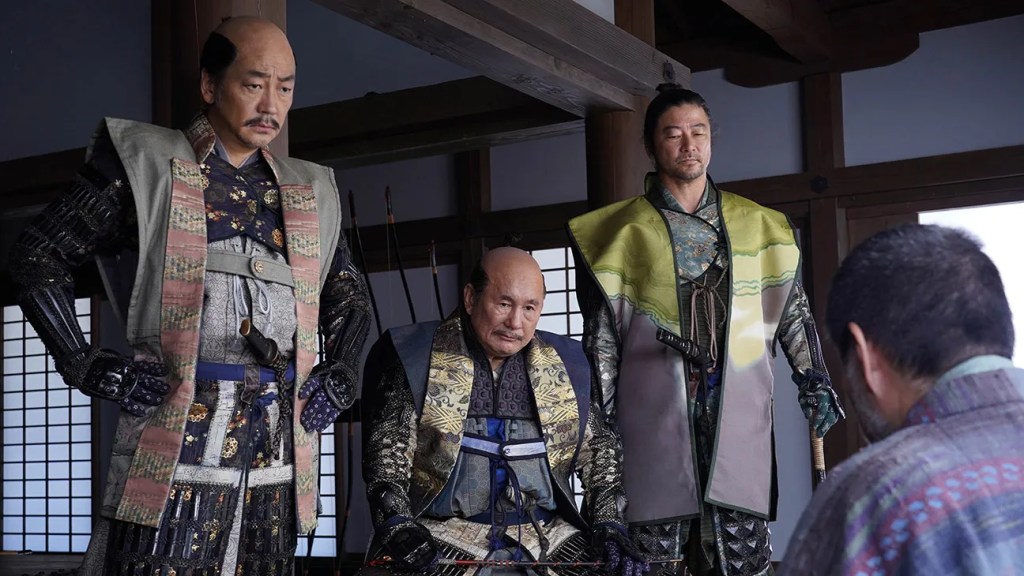
A queer Samurai epic that does for the chanbara what the Outrage trilogy did for the yakuza genre. Kitano’s late style is especially fascinating in the way it inverts the approach to genre that characterized his early films. If those are stripped down to the bare minimum and concentrate all of the action into a few brief moments, his late films turn everything up to eleven and pile on so much incident that they become absurdist comedies.
18) Megalopolis (Francis Ford Coppola)
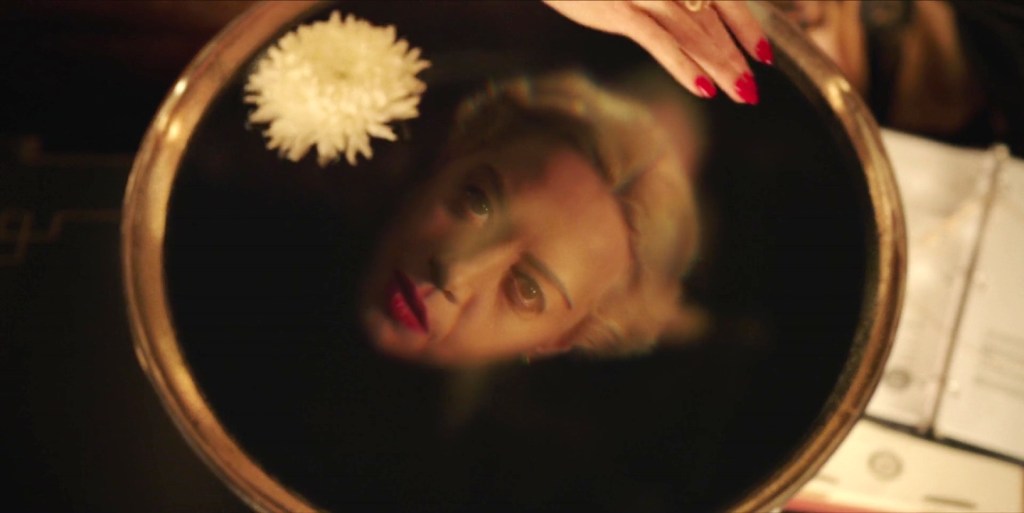
It would have been disappointing if Megalopolis turned out to be what anyone was expecting it to be. I was way off: it’s less Youth Without Youth and more Southland Tales than I would have guessed. It’s very funny (MVP Aubrey Plaza) and its ribald tone does a lot to offset its grandiosity. I watched it twice and I expect to occasionally revisit it for the rest of my life. I haven’t really come to terms with it yet, but I will say that I think people have been too quick to interpret it as a Randian parable. The opening of the movie jumps directly from a speech about the dangers of powerful men to an unflattering Adam Driver scene. I don’t think it’s right to interpret him as the straightforward hero of the film. It’s much thornier than that.
17) Femme (Sam H. Freeman, Ng Choon Ping)
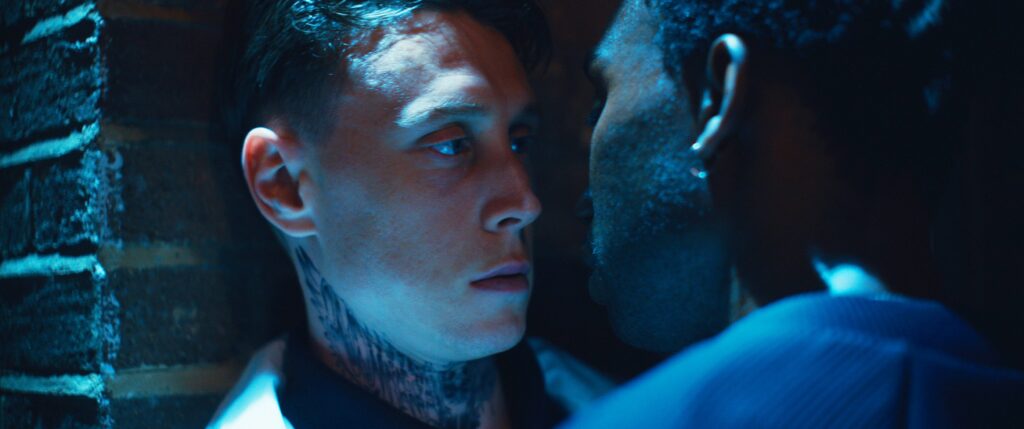
I wasn’t sure about the premise– a drag queen (Nathan Stewart-Jarret) is the victim of a homophobic attack by a closeted tough guy (an extraordinary George MacKay), who he later seduces with the intention of making revenge porn. This idea could have easily devolved into a cold shower of moralism. But it absolutely does not. The film instead focuses on the way the situation becomes a turn on for Stewart-Jarret, as well as the pathos behind MacKay’s violence and the almost involuntary tenderness between the two men. The mixture of expressionistic nocturnal eros/thanatos adventures with very British kitchen sink dramatic intensity renders this unique and (for me) exhilarating.
16) The Taste of Things (Trần Anh Hùng)

Perhaps the most thoroughly French food movie ever made. I expect that people who have an interest in traditional French haute cuisine will appreciate this more than, say, militant vegans will. Magimel and Binoche are great and I am thrilled just to observe them in the kitchen, but what really puts this over the top for me is the way the kitchen material is allowed to do all of the heavy lifting in conveying their relationship and the way they feel about each other. The scenes between Magimel and his apprentice are just as great.
15) Caught by the Tides (Jia Zhangke)

I don’t expect that someone new to Jia would get very much out of this, and even as a lover of his work I didn’t connect with it as immediately as many of his other films. But the longer I sit with it, the more fascinating I find it. It consists mostly of material that he shot for earlier films and didn’t use, but it also reuses some scenes that did make it into earlier films, and then it concludes with newly-shot material that ushers Jia’s body of work into the future. It is, of course, about the experience of cultural transformation in China, but it is also a monument to his decades-long creative and personal relationship with Zhao Tao. By tapping into this history, it transmutes an assortment of clips and outtakes into something immense and powerful.
14) The Plough (Philippe Garrel)

I prefer the French title, Le Grand Chariot. This is another one that is probably a bad place to start in the director’s filmography. Appreciating what this film is doing requires prior familiarity with Garrel and his “family business” approach to cinema. It is a relatively compact film that casually elides a great deal, but connecting it with Garrel’s career adds a lot. As you probably know if you’re reading this, I am interested in late career films, and this is a remarkable example. Garrel imagines his own death, and from this posthumous vantage point he mourns the dissolution of his family’s artistic collaboration while also finding the grace to let go.
13) Trap (M. Night Shyamalan)
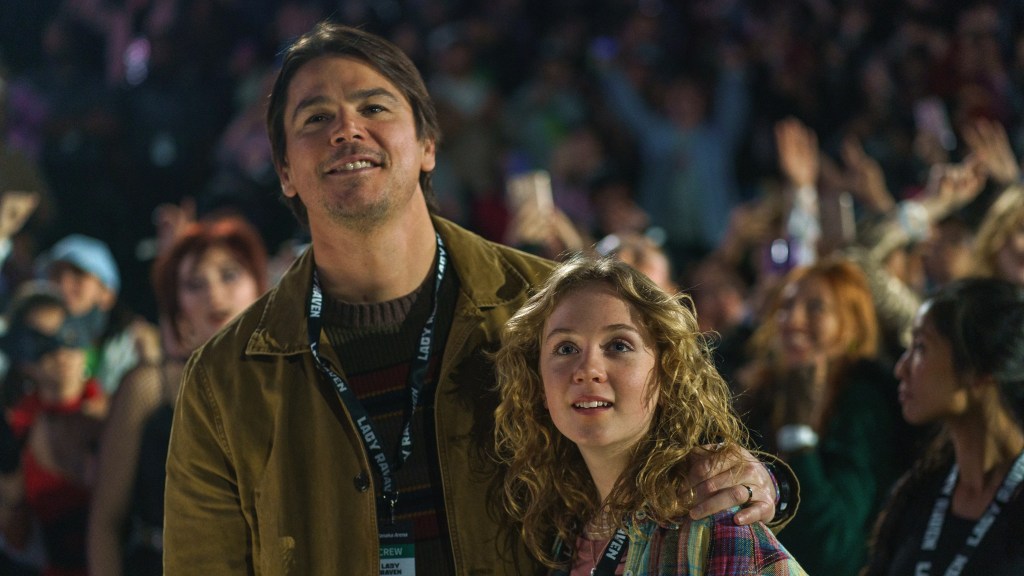
Shyamalan at his funniest and most impish. A friend compared it to Raising Cain, and this is right on the money. It’s Shyamalan’s De Palma movie, and it’s his wickedest examination of fatherhood.
12) Twilight of the Warriors: Walled In (Soi Cheang)

The action movie of the year, without a doubt. Anyone who appreciates martial arts cinema will surely enjoy it, but the impression it makes on you will probably be proportionate to your relationship with Hong Kong cinema. It is a worthy elegy for a great film culture that has been slowly slipping away. Like in Cheang’s outstanding Limbo, the sets are a wonder to behold. It recreates Kowloon Walled City, which was torn down in the early 90’s and here becomes a grand visual metaphor for so much that’s been lost.
11) Red Rooms (Pascal Plante)

A movie about WITCHES. I love the idea of portraying hacking as postmodern witchcraft and I love the way this stays with the protagonist for two hours while managing to sustain a genuine mystery about what the hell she could be up to (the only non-misleading hints we get are abundant references to Arthurian lore!).
10) Dogman (Luc Besson)

Caleb Landry Jones delivers my favorite performance of the year as a victim of childhood abuse who forges an identity through drag performance and love of dogs. I don’t think I’ve seen a single person other than my brother bring this up as one of their favorites of the year, but when he and I both watched it we had an *extremely* enthusiastic phone conversation about how much we enjoyed it. It is the ultimate Luc Besson movie, for better or worse, shedding most of his usual genre trappings while keeping the structure and emotional core intact. It is also absolutely bananas– by far the craziest new movie I saw this year.
9) Cloud (Kiyoshi Kurosawa)
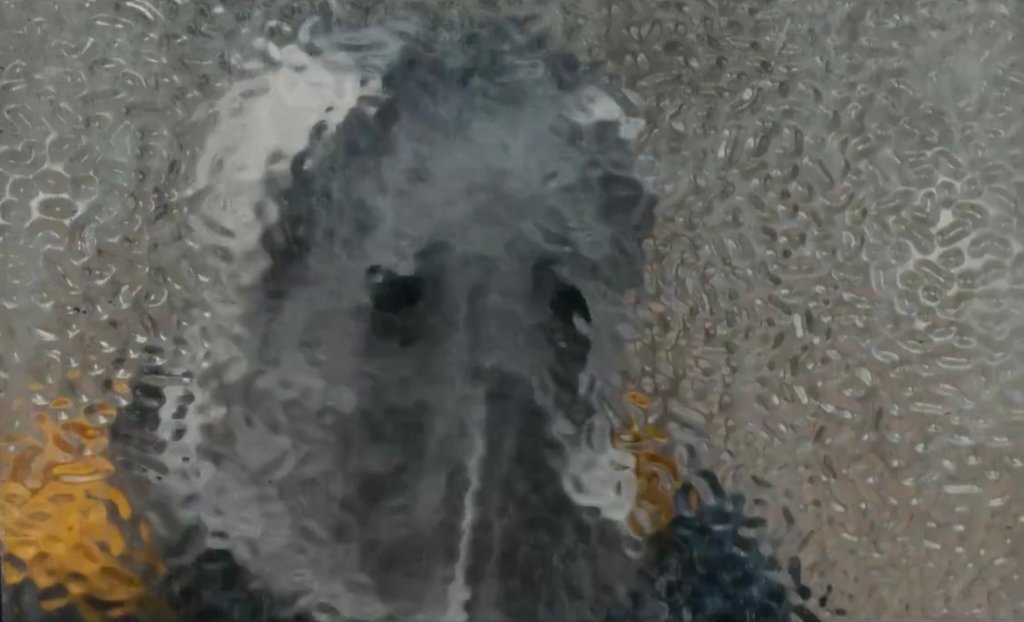
Or, Evil Does in Fact Exist. The genre transformation this enacts gets at something deeper and harder to articulate than mere dehumanization or moral degeneration– more like a creeping, sick feeling that the whole world is unraveling and the thread of civilization is about to break. Given the way 2025 is going so far, it feels in retrospect like the most prescient movie of 2024.
8) Chime (Kiyoshi Kurosawa)

Chime takes material that is familiar for Kurosawa and pushes it further than ever into the realm of abstraction. 45 minutes of free-floating dread. No one is translating the global vibe into cinema more adeptly than Kurosawa.
7) Scorched Earth (Thomas Arslan)

This has continued to grow on me since I watched it. It is consummate Bressonian crime cinema and pretty much a perfect movie. It’s a sequel to Arslan’s In the Shadows, which is also outstanding. The score is far more present here than in the first film, and I love the way the controlled surface of Berlin is peeled away and the droning bass colors the underworld as a menacing realm where you have to look over your shoulder at all times and assume that everyone is about to stab you in the back.
6) In Our Day (Hong Sang-soo)

If my dad were still around, this is the movie I would have chosen to introduce him to Hong. The old poet’s reaction to trying modern non-alcoholic beer hit so close to home that I almost spit out the non-alcoholic beer I was drinking while I watched. A very beautiful movie.
5) Last Summer (Catherine Breillat)

A Chabrolian adultery quasi-thriller brimming with the intensely uncomfortable eroticism that Breillat does better than anyone else. I grew up with her as my core example of what it means to be a feminist filmmaker. How times have changed!
4) By the Stream (Hong Sang-soo)

Hong is the greatest poet of male embarrassment, and here he breaks from his recent run of films by returning to this subject matter. I think it might be the first occasion in his filmography where Kim Min-hee gets angry? She certainly hasn’t gotten angry in a while. Her performance is a surprising departure from the contemplative persona she has been developing in Hong’s late films, and her scenes with the creepy instructor are among the most bitingly funny in Hong’s career (which is really saying something). But the movie also has a gentle side that’s more typical of his late films, and its depiction of the role of creativity in personal fulfillment is lovely.
3) Meiyazhagan (C. Prem Kumar)

I have been undertaking a deep dive into Tamil cinema, and this is one of many absolute gems that I’ve encountered. It’s about a man who is alienated from extended family because his immediate family was wronged by his mother’s siblings in the distant past, but who finally makes the journey back to his hometown to attend the wedding of a female cousin who he was close to growing up. When he arrives at the wedding, a man who he does not recognize latches onto him as though they were long-lost brothers, and although he finds the man overbearing, he pretends to know him in order to avoid a confrontation and just get the whole ordeal over with. Things do not go as planned, however, and the two men spend a long night together. I don’t want to spoil too much, but it is a story about reconnecting with a version of oneself that has long been forgotten, and I say without exaggeration that for me it is among the warmest and most moving depictions of male friendship in all of cinema. NB, this is on Netflix, but this version has 20-some minutes cut out. I don’t think it would be a mistake to watch the Netfix cut (I did), but if you want to see the full version, a generous cinephile named Kris Salaar has reconstructed what he calls the “Potato Cut” by reinserting the deleted scenes into the Netflix version. He can be reached at krislovesmovies96@gmail.com and he’s happy to share the file. I watched the Potato Cut, and I think it’s better, though the reinserted footage is of uneven quality and the transitions are a bit disruptive.
2) Juror #2 (Clint Eastwood)

My least favorite take on this movie is that it’s a simple throwback to 90’s courtroom dramas. It does make contact with this tradition, but it is doing something far more acrid and sophisticated. It has a clear relationship with Twelve Angry Men, but it inverts the fantasy that the system works. Every glimpse of justice depends on the jury breaking rules and ignoring instructions. Like Cloud, it is a perfect movie for the dawn of 2025, because it reflects the reality that the experiment of liberal society is in shambles. The moral ideal of the middle class family is laid bare as a self-interested delusion, rotten to the core but still ideologically dominant. At the same time, this is one of the best movies I’ve ever seen about the moral dimension of recovery. It’s an understated aspect of the movie (I imagine it’s more prominent in the script), but it should be unmistakable for anyone familiar with the 12 steps. Notice the way Hoult clutches (and frequently drops) his AA coin whenever he’s conflicted. His moral crisis emerges from a tension between recovery commitments: becoming the person your family needs and helping other alcoholics. It is absolutely core AA doctrine that the keys to long term recovery are continuing to take personal inventory, living with rigorous honesty, correcting mistakes promptly, cultivating spiritual growth, and above all else being of service to other alcoholics. This what all the stuff about whether Sythe (the man on trial) can change or not is about. The AA creed is that no case is hopeless. The dedicated 12th stepper goes into prisons and institutions and tries to help the people who everyone else has given up on. Sythe is a possibly irredeemable gang member, but also an alcoholic, and the intensity of Hoult’s turmoil reflects the way he can’t get out of the situation without betraying one or more of the core values he’s pursuing. Being a “good father” has become incompatible with rigorous honesty for him. He can only justify his actions with the claim that Sythe is a criminal in his essence and so unable to reform. But to believe this is to reject the 12th step.
1) Here (Robert Zemeckis)

A Robert Zemeckis Rorschach test. Part of what I love about Zemeckis is the way his films embrace contradictions rather than trying to iron them out. Is this Boomer pabulum, delivering a bittersweet reminder that home is where the heart is? Is it a profoundly unsettling memento mori that conveys the sensation of a moral life passing by too quickly? Is it a deconstruction of the mythology of the post-war era as the peak of American exceptionalism? Is it a clumsy pop reminder that the times they are a changing? Is it a tragedy about a person with a degenerative cognitive disease forgetting their desire to be happy? Is it Benjamin Franklin fan fiction? Is it a haunted house movie, complete with the “ancient Indian burial ground” trope? Is it a garish motion-capture experiment? Is it a subversive melodrama with CGI hummingbirds taking the place of Sirk’s deer? Is it an aesthetically radical attempt to translate a formally ambitious graphic novel to cinema? It is all of these things and more, and I’d call it a masterpiece.
Angela Strohl

- The Count of Monte Cristo (Alexandre de La Patellière, Matthieu Delaporte)
- Nosferatu (Robert Eggers)
- The Crow (Rupert Sanders)
- Here (Robert Zemeckis)
- Last Summer (Catherine Breillat)
- The Brutalist (Brady Corbet)
- Coup de Chance (Woody Allen)
- Juror #2 (Clint Eastwood)
- The Taste of Things (Trần Anh Hùng)
- In Our Day (Hong Sang-soo)
HM: Oh, Canada (Paul Schrader), A Complete Unknown (James Mangold), Eureka (Lisandro Alonso)
Isabel Strohl

- Juror #2 (Eastwood)
- Here (Zemeckis)
- The Substance (Fargeat)
- Megalopolis (Coppola)
- Furiosa (Miller)
- Smile 2 (Finn)
- Civil War (Garland)
- The Brutalist (Corbet)
- The Bikeriders (Nichols)
- Nightbitch (Heller)
HM: A Better Man (Gracey), Dune Part 2 (Villeneuve), Godzilla x Kong: The New Empire (Wingard), Rebel Ridge (Saulnier)
Joshua Strohl

- Here (Zemeckis)
- Hard Truths (Leigh)
- Juror #2 (Eastwood)
- Megalopolis (Coppola)
- Furiosa (Miller)
- Kidnapped (Bellocchio)
- Last Summer (Breillat)
- Dogman (Besson)
- Scorched Earth (Arslan)
- Horizon: An American Saga – Chapter One (Costner)
- Evil Does Not Exist (Hamaguchi)
- The Palace (Polanski)
- Aggro Drift (Korine)
- Red Rooms (Plante)
- Do Not Expect Too Much From the End of the World (Jude)
- Coup de Chance (Allen)
- Trap (Shyamalan)
- Twilight of the Warriors: Walled In (Cheang)
- The Room Next Door (Almodovar)
- The Killer (Woo)
- Hundreds of Beavers (Cheslik)
- Kubi (Kitano)
- Hit Man (Linklater)
- Smile 2 (Finn)
- I Saw the TV Glow (Schoenbrun)




